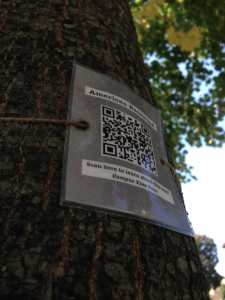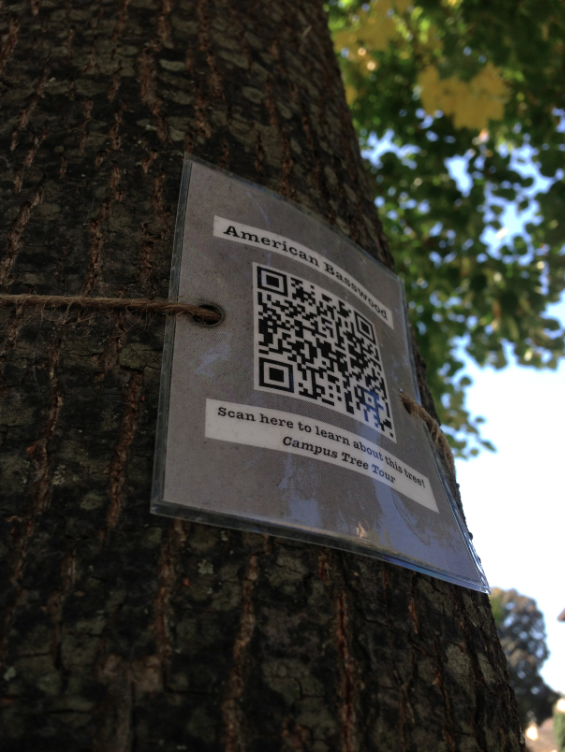Unusual markings started to appear on South Campus trees this fall courtesy of a new biology department program.
Professor Amy Verhoeven started placing QR codes, a type of barcode that connects to a specific webpage when a smartphone scans the barcode, on the trees with a student during a work-study program.
The QR code brings students information about the plant the code is on. Verhoeven said the point of the project is to label plants and trees around campus so that people passing might take interest in the unique barcodes on each species.

“The idea started in the greenhouse, where we had the idea to put QR codes on plants and use them in classes and for community members to come in and learn something about these plants,” Verhoeven said.
The label includes the plant species’ name, a barcode and a “scan here to learn more about this tree” tagline. The codes are connected to an Internet webpage so that, when scanned, the visitor will be brought to the correlated plant’s webpage to learn more about it.
The project started Sept. 23, and Verhoeven said plants and trees all over South Campus will yield many different QR codes in coming weeks.
Verhoeven said this is part of her involvement is a “partnership in learning,” and students are paid to work on a project with the professor.
Andrew O’Brien, a 2013 alumnus, joins Verhoeven who developed the code and web page for the project.
“The plants we selected vary in complexity and come from a wide range of environments. Once the plants were selected, I found information on each of the selected plants from a variety of sources,” O’Brien said. “We tried to create an information page for each plant that would interest the viewer while also giving a good educational summary.”
O’Brien’s system has developed 10 codes for greenhouse plants and five for trees.
“When you get to the site, you will see species name, human uses, medicinal uses, wood uses. And, if it’s winter, you can scan it and see what it looks like when its full,” Verhoeven said.
Verhoeven said the project has been such a success that she decided to replicate the process with her plants, food and medicine class this fall.
“One of the projects for this class will be to have 10 students code a total of two plants and two trees each … and hang them around (South) Campus,” she said.
Junior Ryan Mary, a student participating in the project, said he thinks it’s important for students to recognize the importance of plants biologically, and this project will enable students to learn more.
“What I will get out of the project is of less concern to me as the service that will be provided to the campus community,” Mary said. “These trees around campus are something that students see everyday, but few know anything about.”
Luke Moe can be reached at moe95234@stthomas.edu.




I just love the idea of educating people with something as simply as a QR code. The most important thing to consider when creating your QR code is what your goal is for using it and making sure it is valuable to the user -and it definitely is here! I use http://www.zumoqr.com/ to create my QR campaigns, and can highly recommend this system.